Do you have a question about the Samsung U32R590 and is the answer not in the manual?
Ensure space around the product for ventilation. An internal temperature rise may cause fire and damage the product.
Important safety warnings and cautions for product use, covering potential injury and property damage.
Guidelines for storing the monitor safely to prevent damage and maintain quality.
Key warnings and cautions for operating the monitor safely, including handling high voltage and external factors.
Identification of monitor parts, control buttons, power LED, and function key guides.
Explanation of shortcut button functions for quick access to features like Eye Saver Mode and Volume.
Detailed explanation of the function key guide and its operations for navigating menus and settings.
How to configure eye saver mode, brightness, contrast, and volume settings from the initial screen.
Description and function of various input/output ports on the monitor, including HDMI and DisplayPort.
Adjusting the screen tilt and securing the monitor with an anti-theft device for safety.
Safe methods for moving the monitor to prevent screen damage or impact.
Step-by-step guide to securely attach the monitor stand to the main body.
Step-by-step guide to safely remove the monitor stand from the main body.
Instructions for connecting a PC to the monitor using various cables like HDMI.
Details on connecting via HDMI-DVI, DisplayPort, and headphones for audio output.
Steps for connecting the power adapter and tidying up connected cables for a clean setup.
Recommended posture for use and instructions for driver installation and optimum resolution setup.
Optimizing picture quality with MAGIC Bright feature for different environments.
Adjusting brightness, contrast, sharpness, and color settings for optimal viewing.
Using Upscale, Eye Saver Mode, HDMI Black Level, Game Mode, and Response Time features.
Configuring display size and screen positioning for PC and AV modes.
Enabling and understanding the Picture-by-Picture (PBP) mode for dual-source display.
Configuring sound source, picture size, and contrast for each screen in PBP mode.
Setting the transparency level for the on-screen display menu windows.
Configuring menu language and the timeout for the OSD display.
Running a diagnostic test to check monitor functionality and identify potential issues.
Utilizing power saving features and setting automatic power-off timers for energy efficiency.
Configuring PC/AV mode, HDMI version, DisplayPort version, and source detection methods.
Understanding power LED behavior and resetting all settings to default factory configurations.
Guide to installing and using the Easy Setting Box software for monitor partitioning.
Checking system compatibility and potential restrictions for Easy Setting Box installation.
Steps to take before calling customer service, including testing and checking connections.
Resolving common screen, sound, and connection problems with step-by-step guidance.
Answering common questions about changing display frequency, resolution, and power-saving modes.
Technical details including model name, size, display area, power supply, and environmental conditions.
List of supported resolutions, frequencies, pixel clock, and sync polarity for various display modes.
Conditions under which service charges may apply, even if the product is under warranty.
Information on damage caused by customer actions or other non-defect related issues.
Ensure space around the product for ventilation. An internal temperature rise may cause fire and damage the product.
Important safety warnings and cautions for product use, covering potential injury and property damage.
Guidelines for storing the monitor safely to prevent damage and maintain quality.
Key warnings and cautions for operating the monitor safely, including handling high voltage and external factors.
Identification of monitor parts, control buttons, power LED, and function key guides.
Explanation of shortcut button functions for quick access to features like Eye Saver Mode and Volume.
Detailed explanation of the function key guide and its operations for navigating menus and settings.
How to configure eye saver mode, brightness, contrast, and volume settings from the initial screen.
Description and function of various input/output ports on the monitor, including HDMI and DisplayPort.
Adjusting the screen tilt and securing the monitor with an anti-theft device for safety.
Safe methods for moving the monitor to prevent screen damage or impact.
Step-by-step guide to securely attach the monitor stand to the main body.
Step-by-step guide to safely remove the monitor stand from the main body.
Instructions for connecting a PC to the monitor using various cables like HDMI.
Details on connecting via HDMI-DVI, DisplayPort, and headphones for audio output.
Steps for connecting the power adapter and tidying up connected cables for a clean setup.
Recommended posture for use and instructions for driver installation and optimum resolution setup.
Optimizing picture quality with MAGIC Bright feature for different environments.
Adjusting brightness, contrast, sharpness, and color settings for optimal viewing.
Using Upscale, Eye Saver Mode, HDMI Black Level, Game Mode, and Response Time features.
Configuring display size and screen positioning for PC and AV modes.
Enabling and understanding the Picture-by-Picture (PBP) mode for dual-source display.
Configuring sound source, picture size, and contrast for each screen in PBP mode.
Setting the transparency level for the on-screen display menu windows.
Configuring menu language and the timeout for the OSD display.
Running a diagnostic test to check monitor functionality and identify potential issues.
Utilizing power saving features and setting automatic power-off timers for energy efficiency.
Configuring PC/AV mode, HDMI version, DisplayPort version, and source detection methods.
Understanding power LED behavior and resetting all settings to default factory configurations.
Guide to installing and using the Easy Setting Box software for monitor partitioning.
Checking system compatibility and potential restrictions for Easy Setting Box installation.
Steps to take before calling customer service, including testing and checking connections.
Resolving common screen, sound, and connection problems with step-by-step guidance.
Answering common questions about changing display frequency, resolution, and power-saving modes.
Technical details including model name, size, display area, power supply, and environmental conditions.
List of supported resolutions, frequencies, pixel clock, and sync polarity for various display modes.
Conditions under which service charges may apply, even if the product is under warranty.
Information on damage caused by customer actions or other non-defect related issues.
| 3D | No |
|---|---|
| Panel type | VA |
| Color gamut | 75 % |
| Display diagonal | 31.5 \ |
| Screen curvature | 1500 mm |
| Display technology | LED |
| Native aspect ratio | 16:9 |
| Maximum refresh rate | 60 Hz |
| Screen curvature rating | 1500R |
| Viewable size, vertical | 392.23 mm |
| Contrast ratio (typical) | 2500:1 |
| Display number of colors | 1.073 billion colors |
| Viewable size, horizontal | 697.31 mm |
| Display brightness (typical) | 250 cd/m² |
| Supported graphics resolutions | 3840 x 2160 |
| Dynamic contrast ratio marketing name | Mega Contrast |
| Picture-by-Picture (PbP) | Yes |
| AC input voltage | 100 - 240 V |
| Power consumption (max) | 59 W |
| Annual energy consumption | 70 kWh |
| Power consumption (standby) | 0.3 W |
| Power consumption (typical) | 48 W |
| DisplayPort version | 1.2 |
| VGA (D-Sub) ports quantity | 0 |
| Operating temperature (T-T) | 10 - 40 °C |
| Operating relative humidity (H-H) | 10 - 80 % |
| Product color | Gray |
| Market positioning | Home |
| VESA mounting | - |
| Tilt angle range | -1 - 17 ° |
| Package depth | 503 mm |
| Package width | 795 mm |
| Package height | 189 mm |
| Package weight | 8400 g |
| Cables included | HDMI |
| Harmonized System (HS) code | 85285210 |
| Depth (with stand) | 237.9 mm |
|---|---|
| Height (with stand) | 515 mm |
| Weight (with stand) | 5500 g |
| Depth (without stand) | 83.6 mm |
| Width (without stand) | 712.7 mm |
| Height (without stand) | 420.9 mm |
| Weight (without stand) | 4800 g |
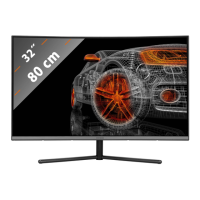

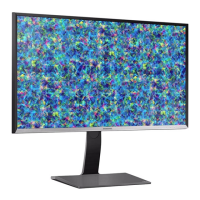
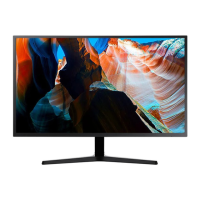
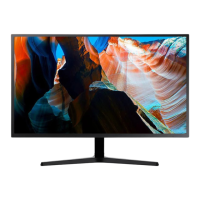


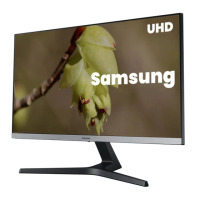

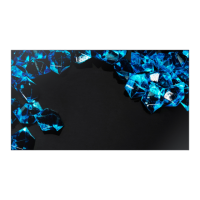
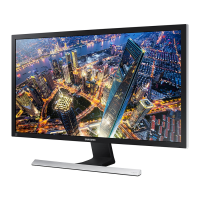
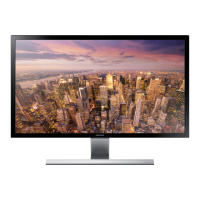
